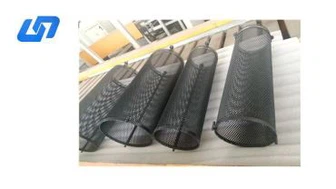
Lead Dioxide Titanium Electrode
Under the environment of oxygen evolution, people have developed the lead dioxide electrode (PbO2): a non-stoichiometric compound that is deficient in oxygen and contains excessive lead. It has multiple crystal forms, using the anode electrodeposition to produce the β-PbO2, which has Oxidation, corrosion resistance (high stability in strong acid H2S04 or HN03), high oxygen overpotential, good electrical conductivity, strong binding force, strong oxidation ability when electrolyzed in aqueous solution, can bear large current, etc.
Product Introduction
The lead dioxide covered titanium anode (Ti-PbO2)has low resistivity, stable synthetic properties, solid oxidation opposition (solid oxidation capacity during electrolysis in fluid arrangement); high consumption opposition (higher dependability in solid corrosive HzS04 or HN03).
PbO2 electrodeposition is that firstly the oxygen forms such as chemisorbed OHads will formin the intermediate layer, then forms soluble intermediate products such as Pb (OH) 2+, and finally oxidizes to form a PbO2 coating. The reaction process is: lead dioxide anode
H2O → OHads + H ++ e−
Pb2 ++ OHads → Pb (OH) 2+
Pb (OH) 2 ++ H2O → PbO2 + 3H ++ e−
Musiani et al. Listed the equation of anodization in a solution of suspended metal ions:
Mn ++ particles-me → MO (m + n) / 2-matrix
Product specifications:
overall specifications: 5 * 1280 * 1380MM / coated titanium mesh area: 5 * 800 * 1280mm or made according to drawings
Coating thickness: 3-5mm
Superior performance:
1) High oxygen evolution potential: 1.68V
2) High current resistance: Max 5000A / M2
3) High production efficiency
4) Easy installation
5) Lifetime: 3-5 years
Application area:
1. Chrome plating in hard acidic solutions such as chromic acid, hard chromium plating, and the use of tin-free steel in the steel industry.
2. Chromate treatment. Surface treatment of steel plates and chromate treatment of metal products.
3. Electrolytic production of inorganic compounds such as chromic acid, perchlorate and periodate. The electrolytic oxidation method is used to purify the wastewater to make the chemical oxygen demand (COD) and biological oxygen demand (BOD) reach the discharge standard.
4. Electrolytic oxidation to synthesize organic compounds in pickling electrolysis.
5. Electrolytic production of ozone requires the use of electrode materials with high oxygen overpotentials. The lead dioxide titanium electrode has good catalytic activity.
6. Electrolyte recovery and extraction of non-ferrous metals in strongly acidic solutions.
7. Wastewater treatment. COD and BOD are purified by electrolytic oxidation.
8. first grade copper removal;
9. For hydrometallurgy(extract precious metals such as nickel, copper, cobalt, etc.)
Hot Tags: titanium anode rod,titanium cathode,platinized titanium anode,titanium electrode,titanium electrodes for electrolysis,Lead Dioxide Titanium Electrode, China, manufacturers, suppliers, factory, customized, wholesale, low price, in stock,pbo2 titanium anode rod,pbo2 titanium anode baskets,pbo2 titanium anode,pbo2 titanium anode rod,pbo2 titanium anode baskets,pbo2 titanium anode
You Might Also Like
Send Inquiry






